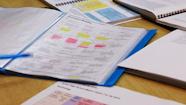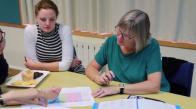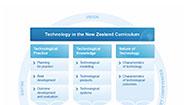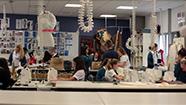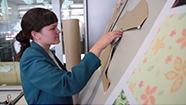Rozeanne Donald explains the key to planning is to work backwards.
Planning using backward mapping
Transcript
Rozeanne Donald: The core of planning is backward mapping from the destination you wish to achieve. If you’re making a technological outcome you won’t know what exactly it’s going to be but you will know some of the attributes and specifications. To achieve the specification of accurate information, you will need to gather that information, check it, put it into a form that’s publishable. Then you’ll need to check it again with your stakeholders before it goes live in your outcome. Or you might need photos and you might need to get permission from parents to use those photos, and then they have to be published again to a format that’s suitable for your outcome. And all of those steps take time and the students need to think through all those steps in order to backward map from achieving that specification.
Students often don’t realise how much things change when you’re relying on other people for materials or for information and they often assume that their urgency is matched by the people that they’re talking to and it’s usually almost always not the case. People have their own busy lives and – teenagers in particular and students – they don’t realise that, and that’s something that when you’re taking them through a planning process you have to remind them to give people time in order to satisfy their demands. They might think that getting photos might take a day or two but they don’t realise that if you’re asking someone else they might need plenty of time to actually get around to doing that job.
When students backward map from the attributes and specifications they have at the beginning of a project, as they backward map, you’ll find that other attributes and specifications fall out of that. And as they work towards achieving a specification like accurate information, often it means at the end of it that they can adjust that specification – that they will be able to be much more accurate and specific about what accurate information means. They will be able to say how many pages they’re going to have and how many paragraphs on each page of a website for example, or when they are talking about achieving an attribute of having photos that inform parents about what their children are doing, then they will be able to start talking about the format those photos will need to be in.
So as they plan and breakdown the task of achieving a specification, they’re actually learning and researching the additional specifications – often technical ones – that they’ll need to flesh out their brief. So planning ties in really well with research because if they’re looking at a specification and thinking “How do I achieve that?” then essentially they’re making a list of all the research tasks they have to do in order to understand the specification and once they’ve done that research, they can feed it back into their brief and make their brief much more accurate.
Related videos
School-wide programme planning (04:18)
Cheryl Pym explains how collaboration forms the foundation for school-wide planning in technology education.
Reviewing programme planning in years 7–13 (03:23)
At Diocesan School planning focuses on technology components for years 7–10, and establishing scholarship potential in year 13....
Review of curriculum implementation (03:49)
Margaret van Meeuwen explains how a cycle of self-review has enhanced delivery of curriculum.
A technology department with a digital and design focus (04:13)
Julie Clement shares how a design focus has engaged her students.
Resourcing for a digital and design focus (03:18)
Julie Clement considers how resources influence the authentic experiences for her students.

